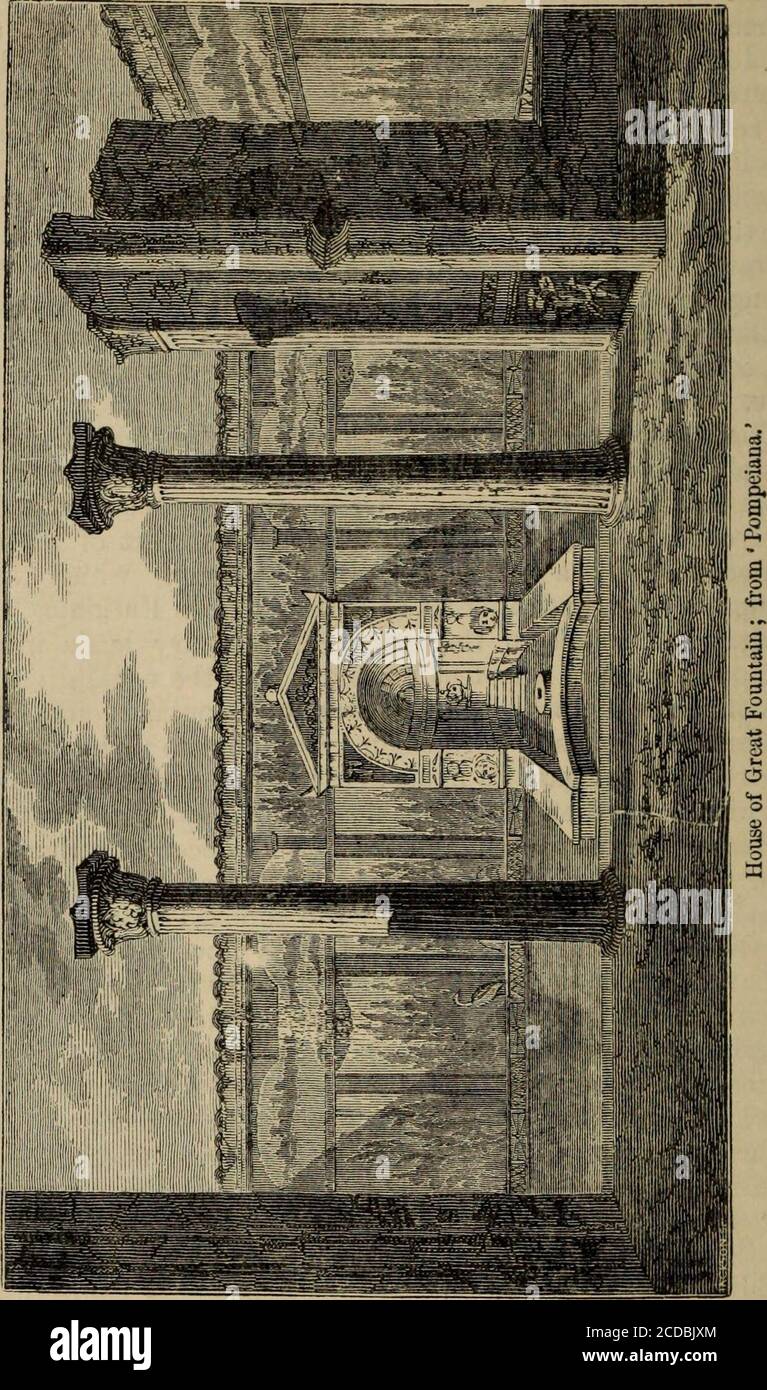. Pompeii; its history, buildings and antiquities : an account of the destruction of the city, with a full description of the remains, and of the recent excavations and also an itinerary for visitors . h gave its name to the house, and the discoveryof which excited an unusual sensation at Naples—a fountainof much more magnitude and attempt at decoration than anyother which had been discovered. Not that it possesses anygreat beauty, as will be seen by the annexed view, in whichit forms the principal feature. It was novel, however, andat that time indeed almost unique, the only thing resemblingi

Image details
Contributor:
Reading Room 2020 / Alamy Stock PhotoImage ID:
2CDBJXMFile size:
7.2 MB (677.4 KB Compressed download)Releases:
Model - no | Property - noDo I need a release?Dimensions:
1215 x 2057 px | 20.6 x 34.8 cm | 8.1 x 13.7 inches | 150dpiMore information:
This image is a public domain image, which means either that copyright has expired in the image or the copyright holder has waived their copyright. Alamy charges you a fee for access to the high resolution copy of the image.
This image could have imperfections as it’s either historical or reportage.
. Pompeii; its history, buildings and antiquities : an account of the destruction of the city, with a full description of the remains, and of the recent excavations and also an itinerary for visitors . h gave its name to the house, and the discoveryof which excited an unusual sensation at Naples—a fountainof much more magnitude and attempt at decoration than anyother which had been discovered. Not that it possesses anygreat beauty, as will be seen by the annexed view, in whichit forms the principal feature. It was novel, however, andat that time indeed almost unique, the only thing resemblingit being in the adjoining house ; and in addition to this thematerials are curious, the whole being incrusted with a sortof mosaic, consisting of vitrified tesserse of different colours, in which blue predominates. The giand divisions of thepatterns and the borders are formed by real shells, whichremain perfect and unchanged. Almost all the ornamentsbear some reference to water, consisting principally ofaquatic plants and birds. On each side of the alcove is amarble mask, hollowed out, and intended, it is conjectm^ed, to receive lights, which at night would have a whimsical and 2 c 386 POAIPEII.. HOUSE OF THE GREAT FOUNTAIN. 887 rather ghastly effect. The water trickled down a little flightof steps into a sort of raised piscina, in the front of which isa round column, pierced for a pipe, and probably intendedfor a jet deau. It is a remarkable instance of the generalnegligence of arrangement, that in this house, which wasevidently one of considerable pretensions, nothing is sym-metrical. The pillars of the peristyle are not equidistantfrom their antaB, and the fountain is opposite neither to anintercolumniation, nor to the centre of the opening of thetablinum. The high wall behind the alcove has lost the paintingsobservable in the plate on p. 386, which is copied from thesecond series of Pompeiana. The plaster fell soon afterSir W. Gell had taken his view. They presented another